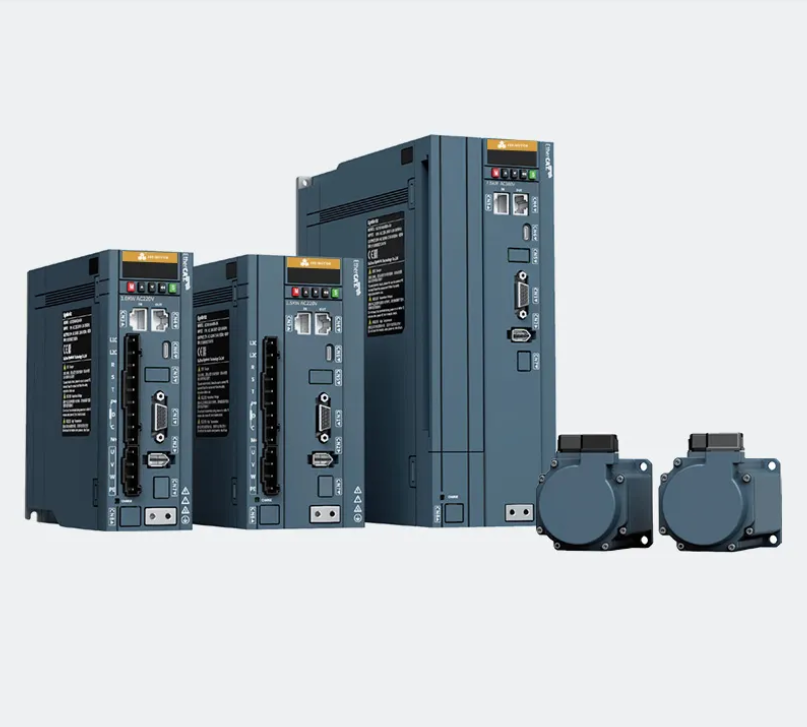Steppeer моторуудын хооронд үндсэн ялгаа Серво мотор
Ажиллах бодит төрөл: Steppeer мотор актюаторууд дахь серво системүүд
Степпер моторуудын ажиллах зарчмыг серво системүүдтэй харьцуулах нь тэдгээрийг ялгаж буй гол онцлогийг сайн харуулна. Степпер моторууд нь бүтэн эргэлтийг олон жижиг алхам болгон хувааж, юмыг хаашаа шилжүүлэх, хурдныг хянах боломжийг олгодог бөгөөд энэ үед гадны сенсор ашиглан буцаан холбоо тогтоох шаардлагагүй байдаг. Энэ нь мастерийн цехийн ерөнхий байршүүлэх ажлуудад маш сайн тохирно. Харин серво моторууд өөр байдаг. Эдгээр чинь байрлалыг нь тогтмол шалгаж байхад тасралтгүй эргэж байдаг. Тиймээс тэдгэээр нь хурд, хүчин чадлыг нь нөхцөл байдлаас шалтгаалан шуурхай тохируулж чаддаг. Байрлалын нарийвчлал чухал бөгөөд даалгаврын явцад тохируулга хийх шаардлагатай үед энэхүү буцаан холбооны онцлог маш чухал байдаг. Тийм ч гэсэн шагай моторууд нь ихэнх өдөр тутмын ажлуудад суурилуулахад хялбар боловч серво моторууд нь цаашид зохицуулахад цаг хугацаа шаардлагатай нарийн төвөгтэй бүтэцтэй байдаг тул эд ангиудын зардал их байдаг.
Зургийн ихэвчлэл болон component-уудын интеграций
Эдгээр хөдөлгүүрүүд хэрхэн нарийн төвөгтэй байгаагийг болон тэдгээрийг системд хэрхэн нэгтгэснийг судлахдаа автоматжуулалтын ертөнцөд стэппер ба серво хөдөлгүүрүүд нь тодорхой ялгаатай байдаг. Стэппер хөдөлгүүрүүд нь дотор талдаа цөөн хэсгээс бүрдсэн энгийн бүтэцтэй байдаг тул үйлдвэрлэхэд харьцангуй хямд байдаг. Энгийн байдал нь олон төрлийн машины хувьд ихээхэн асуудалгүйгээр шууд ажилладаг байдаг. Гэвч серво хөдөлгүүрүүд өөр түүхийг эзэлдэг. Эдгээр чинь энкодер, олон төрлийн хяналтын хэлхээ зэрэг нэмэлт хэсгүүдийг агуулсан тул илүү сайн ажиллагаа үзүүлж чадна гэхдээ зүйлсийг ихэд хүнд болгодог. Нэмэлт боломжууд нь үнээрээ болон үг хэллэгээрээ илүү их зардал болдог ба зөв тохируулга нь их хэмжээний нарийвчлал, програмчлал шаарддаг. Сервонуудад эхлэхийн тулд энэ хүндрэлтэй процесс шаардлагатай бол стэпперүүд нь ихэвчлэн хялбар драйвер боард дээрээ залгаад ажилладаг байдаг.
Тойргийн хүч, хурдны үзүүлэлтийн харьцуулга
Шагуур моторын бага хурдтай тойргийн хүч
Степпер моторууд нь удаан хурдтай үед сайн ажилладаг, учир нь тэдгээрийн бүтэц болон ажиллах зарчимаас үүдэн сайн төөрөө үүсгэдэг. NEMA 23 хэмжээ нь ялангуяа энэ талаар онцлог бөгөөд бага хурдны үед хүчтэй төөрөө үүсгэдэг тул автомжуулалтын системүүд болон роботын хувьд нарийн хөдөлгөөн шаардагдах үед маш сайн ажилладаг. Жишээлбэл, стандарт NEMA 23 мотор нь дунджаар 450 oz-in хэмжээний төөрөөгээр тогтоож байдаг тул ачаалал өртсөн ч эдгээр моторууд дарагдахгүй, сайн ажиллаж байдаг. Ийм ажиллагааны тулд инженерүүд ихэвчлэн нарийн үйлдэл гүйцэтгэх боломжтой бөгөөд удаан хурдтай ажиллах шаардлагатай үед степпер моторуудыг сонгодог.
Серво моторын их хурдтай ажиллах чадвар
Серво моторууд нь 5000-аас дээш эргэлтийн хурдтай ажиллах боломжтой тул хурдан хөдөлгөөнтэй төхөөрөмжүүдэд маш сайн тохирдог. Иймээс баглаан боодлын шугам эсвэл хурдан хөдөлгөөн шаарддаг робот мөрөнд маш тохиромжтой. Эдгээр моторуудыг онцлог бол нэг дунджаар эргэлтийн хамгийн дээд хурдаараа ч ажиллах чадвараа алдалгүйгээр хүчээ байлгаж чаддаг явдал юм. Эргэлтийн момент нь хүчтэй байсаар үлдэх тул эргэлтийн хурд нэмэгдэхэд ажиллагааны чанар унахгүй бөгөөд энэ нь нарийн үйлдвэрлэлийн орчинд маш чухал ач холбогдолтой. Ихэнх инженерүүд 1000 эргэлтийн хурдаас дээш хурдтай ажиллах үед серво моторууд шаг алхамт моторуудаас илүү давуу талтай гэж хэлнэ. Учир нь шаг алхамт моторууд энэ хурдаас хойш үр дүнгээ алдаж эхэлдэг. Бага зөрөөтэй нарийн төвөгтэй бүтээгдэхүүн үргэлжлүүлэн хийх үйлдвэрүүдэд энэ өндөр хурдтай үед тогтвортой хүчний гаралт нь серво моторуудад төвөгтэй үйлдвэрлэлийн нөхцөлд давуу тал олгож байна.
NEMA 23 Хөрш төвөгтэй ашиглалт
NEMA 23 хурдны хайрцаг нь шагайн мотортой хослуулбал их ачаалалтай ажлуудыг хийхэд шаардагдах нэмэлт хүчийг олгох боломжтой ихээр дүүргэгч эргэлтийн моментийг үүсгэдэг. Энэ хослол сайн ажилладаг нь хурд болон эргэлтийн моментийн хооронд зохистой тэнцвэрийг бий болгодог. Иймээс CNC төхөөрөмжүүдээс эхлээд үйлдвэрийн талбай дээрх бусад төхөөрөмжүүдэд энэ хослол өргөн ашиглагддаг. Онцгой даралтанд ажилладаг үйлдвэрлэгчдийн хувьд захиалгат хийгдсэн хурдны хайрцагууд нь энэ хамтын ажиллагааг илүү сайжруулж, өөр өөр үйлдвэрлэлийн шугамууд дээрх нарийвчилсан ачаалалд нийцсэн байдаг. Улсын өргөн нутаг дэвсгэрт байрласан үйлдвэрийн талбайн жишээнүүд нь энэ интеграцчилагдсан систем нь моторуудаас хүрэлцээтэй эргэлтийн момент гаргаж авах асуудлыг инженерүүдэд байнга тулгаруулдаг олон салбарт амжилттай ажиллаж байгааг харуулж байна.
Энерги дахин ашигласан ба цагдаагийн хэрэглээний талархал
Ашиглалтын хяналт: Encoder-тэй без ёсны DC мотор
Энкодертой цэнхэрлэг DC хөдөлгүүрүүд нь ихэвчлэн энерги хэмнэхэд сайн байдаг нь ачаалалд хэрэгтэй гүйдлийг нь тохируулдаг тул хэрэглээгүй цахилгааныг нь багасгаж, нийт ажиллагааг нь сайжруулдаг. Эдгээр хөдөлгүүрүүд нь зогсохгүй ажиллаж байгаа үедээ их дахин халахгүй тул одоо үед нүүрс татсан хайрцагнуудыг багасгахыг хүсэж буй компанийд илүү сайн сонголт болдог. Зарим судалгаагаар цэнхэрлэг хөдөлгүүрүүдэд шилжих нь тодорхой нөхцөл байдалд энерги хэмнэх боломжийг 40% орчим хүртэл нь олгодог бөгөөд практикт хэрэгжүүлэх үед эдгээр системүүдийн зохион бүтээлт сайтай, үр дүнтэй байдгийг харуулж байна.
Хашлагын цуглуулалт, Хашлагтай эрсдэл
Хөдөлгүүрийн системд дулааныг зохих ёсоор удирдах нь тэдгээрийн ажиллах хугацаа болон үр дүнгийн чанарыг тодорхойлох чухал хүчин зүйл юм. Степпер хөдөлгүүрүүд нь байнга цахилгаан эрчим хүч хэрэглэдэг тул илүү халуун байдаг. Гэвч серво систем нь өөр байдлаар ажилладаг. Тэдгээруүд нь орж ирэх цахилгаан гүйдлийг удирддаг тул дулааныг илүү сайн удирдах боломжийг олгодог. Энэ нь дулаанаас болж дэд бүрдэл хэсгүүдэд үүсэх стрессыг бууруулдаг бөгөөд ерөнхийдөө илүү урт хугацаагаар ажилладаг гэсэн үг юм. Тоон мэдээний судалгаа нь чанарын серво хөдөлгүүрүүд нь нийтлэг дээр илүү үр ашигтай ажилладагийг харуулж байна. Мөн тэдгээруүд нь цахилгааны зардлыг хэмнэхээс гадна бусад төрлүүдтэй харьцуулахад илүү урт хугацаагаар ажиллах чадвартай байдаг. Үүний тул энгийн температурын хяналт чухал байдаг хэрэглээний талбайнуудад инженерүүд ихэвчлэн тэдгээрийг сонгодог.
Хяналт систем: Эхлүүлэгчийн гишүүн ба Төгсгөлийн гишүүн Дэлгэрэнгүй
Цаг агаарын моторын хяналт гишүүн ба үндсэн үйлдэл
Хамгийн ихэнхийн шагалт хөдөлгүүрийн систем нь нээлттэй гогцооны зарчим дээр ажилладаг бөгөөд энэ нь хүндрэлтэй холболтын бүрэлдэхүүн хэсгүүдийн шаардлагагүйгээр зүйлийг хялбар байлгана. Энэ энгийн загвар нь бусад сонголтуудтай харьцуулахад тэдэнд харьцангуй хямд байхыг хангах бөгөөд иймээс санхүүгийн хувьд хязгаарлагдмал төслүүдэд ихэвчлэн сонгогддог. Түүнчлэн суурилуулалт нь хурдан байдаг бөгөөд энэ нь үйлдвэрлэлийн явцад цаг бүр чухал байдаг үйлдвэрүүдэд чухал ач холбогдолтой байдаг. Гэсэн хэдий ч энэхүү энгийн загварын дутагдалтай тал нь өндөр хурд эсвэл хүнд ачаалал үед нарийн байрлалыг барихад заримдаа хэцүү байдаг. Бид үнэндээ энэ нь хэд хэдэн үйлдвэрлэлийн орчинд тохиолдож байсан бөгөөд тоног төхөөрөмжүүд хэт ачаалалтай үед алхам алганд орж байжээ. Тиймээс шийдвэрээ эцэслэн авахаасаа өмнө систем яг юу хийхийг чиглэснийг маш сайн бодож үзэх нь зүйтэй.
Батер SERVO Мотор Encoder Нэмэлт Буцаалт Хамтран Ашиглах
Серво моторууд нь энкодерийг багтаасан хаалттай системтэй ажилладаг бөгөөд системд байршил, хурдны мэдээллийг маш нарийн буцаан өгдөг. Бүх тогтолцоо нь хөдөлгүүрийг хүчний түвшин, алдааг засах боломжийг олгодог тул машинаас чанартай үр дүн шаардлагатай үед маш чухал байдаг. Степпер моторуудтай харьцуулахад серво моторын энкодерын систем нь машины хийж буй үйлдэлд өөрчлөлт орсон үед өөрийгөө тохируулдаг. Энэ нь хариу үйлдлийн хурд хурдассан байдаг тул инженерүүд нарийн төвөгтэй бөгөөд хүлээх боломжгүй нөхцөл байдалд серво моторыг сонгодог. Үйлдвэрүүдэд өдөр тутмын үйлдвэрлэлийн шугам дээр олон төрлийн таамаггүй бэрхшээл тулгарч байсан ч серво мотортой төхөөрөмжүүд нь хүрээний мэдээлэл, хяналтын механизмуудын тусламжтайгаар гүйцэтгэлээ тасралтгүй сайжруулж байгаа нь харагддаг.
Үнэ, хянаны жишээ, өмнөх онцлог
Эхний төлбөр болон ажиллах үеийн зардал
Степпер хөдөлгүүрүүд нь энгийн бүтэцтэй, үйлдвэрлэхэд хямд байдаг тул анхны харагдацаар давуу талтай байдаг. Үйлдвэрлэлд цогц хэсгүүд болон нарийн инженерчлэл шаардлагатай серво хөдөлгүүртэй харьцуулахад ихэвчлэн хямд байдаг. Гэсэн хэдий ч суурилуулсны дараа юу болохыг мартаж болохгүй. Серво хөдөлгүүрүүд худалдаж авах үед илүү үнэтэй байж болох боловч энерги хэмнэлтийн үр ашигтай байдлаас шалтгаалан урт хугацаанд мөнгө хэмнэнэ. 24/7 ажилладаг үйлдвэрүүд нь сарын цахилгааны нэхэмжлэгт энэ зөрүүг тусгайлан анзаардаг. Цагийн шилжилтэнд тогтмол ажилладаг төхөөрөмжүүдийн хувьд өдөр тутмын бага хэмнэлтүүд хурдан нийлбэрлэгддэг. Зөвхөн анхны үнээр төдийгүй хөдөлгүүр тус бүрийн жил идэвхтэй ажиллах үеийн зардалд үндэслэн үнэлгээ хийснээр бодит үнэ цэнийг илүү сайн ойлгох боломжтой болдог. Ийм байдлаар олон үйлдвэрийн менежерүүд урт хугацаанд илүү ухаалаг төхөөрөмж сонгоход хүрдэг.
Их хэмжээний температурт ажиллах үед хүрээлэн
Хөдөлгүүрийн ажиллах хугацаа нь ихэвчлэн ажиллаж буй орчин, түүнчлэн халууны нөлөөгөөр ихэд хамаарна. Серво хөдөлгүүрүүд нь хэт халалтаас сэргийлэх зориулалтын хөргөх системтэй тоноглолтой ирдэг тул урт хугацаагаар ажиллах боломжийг олгодог. Эдгээр онцлогууд нь хөдөлгүүрийг гладкийн ажиллуулахад тусалж, элэгдлийг багасгаж, хүнд нөхцөлд бусад төрлүүдээс илүү урт хугацаагаар ажиллах боломжийг олгодог. Степпер хөдөлгүүрүүд нь дулаан нөхцөлд мөн сайн ажилладаг ч, урт хугацаагаар хэт халуунд байлгавал тэдгээрийн ажиллагаа унах эрсдэлтэй. Мөн хөдөлгүүрийн төрлүүдийг ажиллах орчинтой нь зөв тохируулах аж үйлдвэр нь тодорхой зааварчилгаа гаргасан байдаг. Хэрэв тогтмол өндөр температуртай нөхцөлд ажиллах шаардлагатай бол хөдөлгүүр халууныг хэрхэн даах чадвартай вэ гэдгийг сайн судлах нь тогтмол ажиллагааг хангах, хүлээхгүй гэмтэл үүсгэхгүй байхын тулд маш чухал байдаг.
Таны ажилд зориулж буй зөвлөмжийг сонгох
Бохирдолын шаардлага болон эмчийн чадварыг харгалзуулна
Систем нь ямар төрлийн ачаалтыг хүлээхийг тодорхойлох нь зөв моторыг сонгоход маш чухал үүрэг гүйцэтгэнэ. Мотор нь зөвхөн эргэлтийн моментийн шаардлагыг хангахаас бус эргэлтийн хурдны шаардлагыг хангасан байх ёстой. Ачаалал нь хугацааны явцад тогтвортой байх үед моторын гүйцэтгэл нь хэвийн түвшинд байдаг тул алхамт мотор нь тийм нөхцөл байдалд харьцангуй сайн ажилладаг. Гэвч ажиллаж байгаа үеэр ачаалалт нь байнга өөрчлөгдөх үед серво мотор нь илүү сайн сонголт болдог. Ийм моторууд нь хурдан нарийвчлалтайгаар тохируулга хийх чадвартай тул өөрчлөгдөж буй нөхцөл байдалд илүү сайн зохицоно. Өөр өөр ачаалал дор ажиллаж буй төхөөрөмжийн хэсгүүдийн гүйцэтгэлийг судлах нь инженерүүд моторын төрлүүдийг илүү ухаалаг сонгоход тусалдаг. Ийм төрлийн шинжилгээ нь моторын найдвартай ажиллагаанд тулгуурласан үйлдвэрлэлийн газрууд, автоматжуулалтын тогтолцоо, бусад инженерийн хэрэглээнүүдийн нийт системийн гүйцэтгэлийг сайжруулдаг.
Хувь хүртэлтийн эрчим хүчээр ажиллах BLDC моторууд ба энкодер
BLDC хөдөлгүүрүүд нь энкодер бүхий байгууламжтай байдаг бөгөөд ачаалал нь тогтвортой биш байх үед маш сайн ажилладаг. Эдгээр хөдөлгүүрүүд нь саад өгөгч болон серво хөдөлгүүрүүдийн сайн талуудыг нэгтгэн авч, илүү их гүйцэтгэлийг хангаж өгдөг. Ийм тогтолцоонууд нь ажиллагаагаа шуурхай өөрчилж, тогтвортой бус нөхцөлд ч хүчдэлийг нь хэвээр хадгалж чаддаг. Бидний харж байгаагаар BLDC хөдөлгүүрүүдэд энкодер нэмэх нь аж ахуйн салбарт ачаалал тогтвортой биш байх үед ажиллагааг илүү сайжруулдаг. Тиймээс нарийн төвөгтэй бөгөөд хяналт тогтоох шаардлагатай машин механизмд нарийн нарийвчлал болон таамаглах боломжгүй нөхцөл байдлыг зохицуулах чадвартай ажил гүйцэтгэхийн тулд олон үйлдвэрлэгчид энкодертэй BLDC хөдөлгүүрүүдийг сонгож байна.
Зардал ба чадварын хооронд баланс авах
Степпер болон серво хөдөлгүүрүүдийн аль нэгийг сонгох шийдвэрийг гаргахдаа хүмүүс ихэвчлэн машинд юу хэрэгтэй байгаагийнхээ оронд юу худалдаж авч чадахаа хардаг. Мөнгөний хувьд ховор байгаа төслүүдэд степпер хөдөлгүүрүүд нь ихэвчлэн сонгогдох бөгөөд хяналтыг сайн байлгаж үнэгүйгээр байлгах боломжийг олгодог. Гэвч ажил нь дээд зэрэг ажиллагаа шаарддаг бол серво хөдөлгүүрүүдэд нэмэлт мөнгө зарцуулах нь ихэвчлэн удаан ажилладаг бөгөөд хурдан тохируулгыг хангах болно. Тиймээс хөдөлгүүрийн төрөл сонгохын өмнө систем ямар үр дүнг өдөр бүр хүргэх ёстойг мөнгөн хэмжээгээр нь сайн бодож үзэх хэрэгтэй.
НӨАТ-ын хэсэг
Степпер мотор болон серво моторын хооронд ямар чухал х煞һе байна вэ?
Хамгийн их х煞һе нь тэдгээрийн ажиллах принцип, зургийн ихэвчлэл, болон ашиглахад хэрэгтэй. Степпер мотор нь цорыг нь зөвхөн зөвхөн шагналтай хувааж, хялбар бөгөөд дутагдалтой байдаг. Серво мотор нь тодорхойлогч системтэй нөөцийн дараалалд ашигладаг бөгөөд их хурдан, адилтгалтай байдаг.
Энэ нь ямар моторыг хурдан ашиглахад зөв вэ?
Серво моторууд нь их хурдны ажиллах үед тогтвортой татсаныг хадгалж чаддаг учраас их хурдтай ашиглахад зориулж байна. Энэ нь 1,000 RPM-с дээш хурданд стабилт байдлыг олгодог.
Хөрш моторууд энергийн дараалалд бодит байдаг уу?
Хөрш моторууд нь эргэн цагаан талбартайгаар ашигладаг тул их эрчим хүч ашиглахад илүү их амьдардаг боловч тухайн ашиглалтаар л бодвол энергийн дараалалд бодит байдаг. Серво моторууд нь эрчим хүчийг тохируулан ашиглахад маш ихээр энергийн дараалалд бодит байдаг.
Агуулагчийн факторууд яаж мотор сонголтоо өөрчилдөг вэ?
Агуулагчийн факторууд, осон болон томоохон температур гэх мэт нь моторын үеэрээс хамаарах ёстой. Серво моторууд нь их температурт ажиллахад маш ихээр үеэрээс хамаарахгүй байдаг учраас шинэчлэлийн системдээ томоохон хувь нэмэгдэж байна.
Хамгийн их зөв хэмжээнд шаардлагатай ажиллагаануудад stepper мотор ашиглах боломжтой уу?
Stepper моторууд нь бага хурдтай сценариудад зөв хяналтыг олгоход ч, их зөв хэмжээ, хувь хүрээний товчлуур, динамик шартай ажиллагаануудад servo моторуудын хамгийн сайн үйл ажиллагаагаар closed-loop feedback системүүдээр амархан ашигладаг.
Гарчиг
- Steppeer моторуудын хооронд үндсэн ялгаа Серво мотор
- Тойргийн хүч, хурдны үзүүлэлтийн харьцуулга
- Энерги дахин ашигласан ба цагдаагийн хэрэглээний талархал
- Хяналт систем: Эхлүүлэгчийн гишүүн ба Төгсгөлийн гишүүн Дэлгэрэнгүй
- Үнэ, хянаны жишээ, өмнөх онцлог
- Таны ажилд зориулж буй зөвлөмжийг сонгох
-
НӨАТ-ын хэсэг
- Степпер мотор болон серво моторын хооронд ямар чухал х煞һе байна вэ?
- Энэ нь ямар моторыг хурдан ашиглахад зөв вэ?
- Хөрш моторууд энергийн дараалалд бодит байдаг уу?
- Агуулагчийн факторууд яаж мотор сонголтоо өөрчилдөг вэ?
- Хамгийн их зөв хэмжээнд шаардлагатай ажиллагаануудад stepper мотор ашиглах боломжтой уу?

